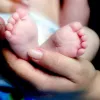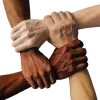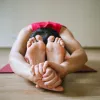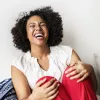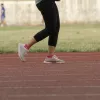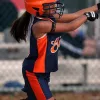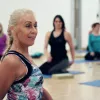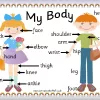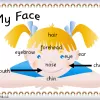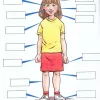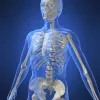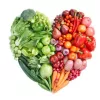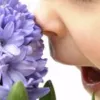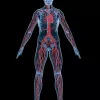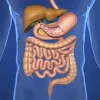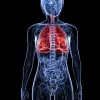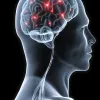Important update from TheSchoolRun
For the past 13 years, TheSchoolRun has been run by a small team of mums working from home, dedicated to providing quality educational resources to primary school parents. Unfortunately, rising supplier costs and falling revenue have made it impossible for us to continue operating, and we’ve had to make the difficult decision to close. The good news: We’ve arranged for another educational provider to take over many of our resources. These will be hosted on a new portal, where the content will be updated and expanded to support your child’s learning.
What this means for subscribers:
- Your subscription is still active, and for now, you can keep using the website as normal — just log in with your usual details to access all our articles and resources*.
- In a few months, all resources will move to the new portal. You’ll continue to have access there until your subscription ends. We’ll send you full details nearer the time.
- As a thank you for your support, we’ll also be sending you 16 primary school eBooks (worth £108.84) to download and keep.
A few changes to be aware of:
- The Learning Journey weekly email has ended, but your child’s plan will still be updated on your dashboard each Monday. Just log in to see the recommended worksheets.
- The 11+ weekly emails have now ended. We sent you all the remaining emails in the series at the end of March — please check your inbox (and spam folder) if you haven’t seen them. You can also follow the full programme here: 11+ Learning Journey.
If you have any questions, please contact us at [email protected]. Thank you for being part of our journey it’s been a privilege to support your family’s learning.
*If you need to reset your password, it will still work as usual. Please check your spam folder if the reset email doesn’t appear in your inbox.
The parts of the body
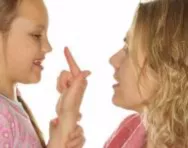
What are the parts of the body?
Your body is more than what you see when you look in the mirror – there are different parts that have different jobs, but each part works together so you can eat, sleep, sit in class and play with friends.
Your body is a pretty amazing thing! While there’s lots happening on the outside that you can see, such as scratching an itch, eating lunch with your friends at school and running outdoors, there’s even more happening inside. Find out more about your bones and muscles, and about your five senses and the nervous system.
Top 10 facts
- You have five digits on each hand and each foot, making 10 fingers and 10 toes altogether. Can you count to 20 using your fingers and toes?
- Each bit of our body is made up from cells, which are the tiniest form of life – like single Lego pieces.
- The parts of our body need blood in order to work properly – blood transports the nutrients each cell needs, and takes away any rubbish.
- The heart keeps blood pumping throughout our body – the heart is one of our vital organs, which means it helps keep us alive.
- Parts of your arm include your hand, wrist and elbow.
- Parts of your leg include your foot, ankle, shin and thigh.
- The parts of your body that help your arms twist around are called shoulders – your legs are attached to hips.
- Your neck allows your head to move from side to side, so you can turn your face to look at something.
- Your stomach sits inside your body, just below your chest and lungs, and above your intestines.
- Parts of your face include your forehead, eyes, cheeks, ears, nose and mouth.
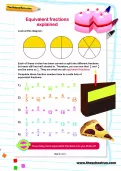
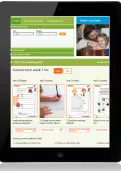
Boost Your Child's Learning Today!
- Start your child on a tailored learning plan
- Maths & English resources added each week
- Keep your child's learning on track
Did you know?
- Fingernails often grow more quickly than toenails.
- If you measure the distance between your wrist and your elbow, that will be about the same as the length of your foot.
- Your heart beats over 100,000 times a day!
- The largest organ inside our body is the liver.
- Your funny bone isn’t really a bone at all – it’s a nerve at your elbow, which is why you feel all tingly when you accidentally hit it.
- The parts of you arm are – hand (and fingers), wrist and elbow. Your arm connects to your body at your shoulder.
- The parts of your leg are – foot (and toes), ankle, shin, knee and thigh. Your leg connects to your body at your hip.
- The parts of your face are – forehead, eyes, ears, cheeks, nose and mouth
- Because we’ve got two ears, eyes, arms, hands, legs and feet, we use ‘left’ and ‘right’ to tell them apart.
See if you can identify these body parts in the gallery:
- A baby's feet
- Hands together
- A woman's back
- Feet and hands together in a yoga pose!
- A laughing face
- A runner's legs
- You need strong arms to play softball!
- People kneeling in an exercise class
- A colourful chart of the parts of the body
- Parts of the face
- A picture of a girl with blanks to write the parts of the body in
Gallery
About
Our body contains trillions of cells – cells are the smallest recorded living things.
In addition to keeping our cells healthy and clean, our blood also works for our immune system and contains antibodies and white blood cells that fight germs and diseases.
Vital organs are the parts of our body that we need to stay alive. These include the heart, brain, lungs, kidneys, liver and pancreas.
Our body has symmetry – that means it looks the same on the left side as it does on the right side.
The body uses different systems to work properly. Some of these are:
- Circulatory system – how our blood moves around
- Digestive system – how the food we eat turns into nutrients, fats and waste through our stomach and intestines
- Muscular system – how we move around; our muscles allow us to do everything from walking and running to picking things up and laughing at jokes!
- Skeletal system – another term for the bones in our body, which together make up our skeleton
- Nervous system – how messages get sent around our body, through our brain, so we know when we’re hungry, when something hurts, when something smells good and when something feels soft
Words to know for parts of the body:
Antibodies – a type of protein in our blood that identifies germs that cause disease and stops those germs from making us ill
Blood – a fluid all through our body that takes care of cells by transporting the nutrients and oxygen they need, and removing any waste
Cells – the smallest living thing – humans are made out of trillions of them
Cheeks – the parts of your face between your nose and your ears
Ears – the farthest part of our face, and the part of our body that hears sounds
Elbow – a joint in our arm that means we can fold it almost in half
Eyes – part of our face that can see things
Fingers – five long, thin digits attached to the end of each of our hands
Foot – the parts at the very end of our legs that we use to stand up, walk and run
Forehead – the flat, hard area at the very top of our face, above our eyes
Hand – the parts at the ends of our arms where our fingers are located that we use to pick things up, scratch an itch, wave hello and lots more!
Heart – a very important muscle that pumps blood throughout our whole body, running our circulatory system
Hips – the joints that attaches our legs to the rest of our body
Intestines – part of our digestive system; where food goes after it leaves the stomach
Knee – the joint in the middle of our leg that lets us bend it so we can walk and run
Liver – one of our vital organs; one of its jobs is to makes important chemicals that help us digest
Mouth – part of our face that we need to eat, talk and smile!
Nose – part of our face that helps us breathe and smell things
Shoulder – the joint near our neck that attaches our arm to our body, allowing it to move around
Shin – the part of our leg below the knee
Stomach – part of our digestive system; where food goes after we chew and swallow it
Toes – five small digits attached to the end of each of our feet
Wrist – the joint that attaches our hand to the rest of our arm, and allows our hand to move in lots of different directions
Related Videos
Just for fun...
- Download great human body learning apps for kids for your device
- Take a look inside the human body with an interactive game
- Play around by dragging and dropping items onto a blank face
- Show off your medical knowledge with CBBC Operation Ouch quizzes
- Strange but true facts about the human body from National Geographic Kids
- Find out more about our organs and what they do with lessons, matching cards and word games about organs and organ donation
Books about parts of the body
See for yourself
- How the body works
- National Geographic: a look at the human body
- Find out weird and wonderful facts about bodies
- Watch a cartoon about how your heart works
- Find out about the job that each part of our body does
